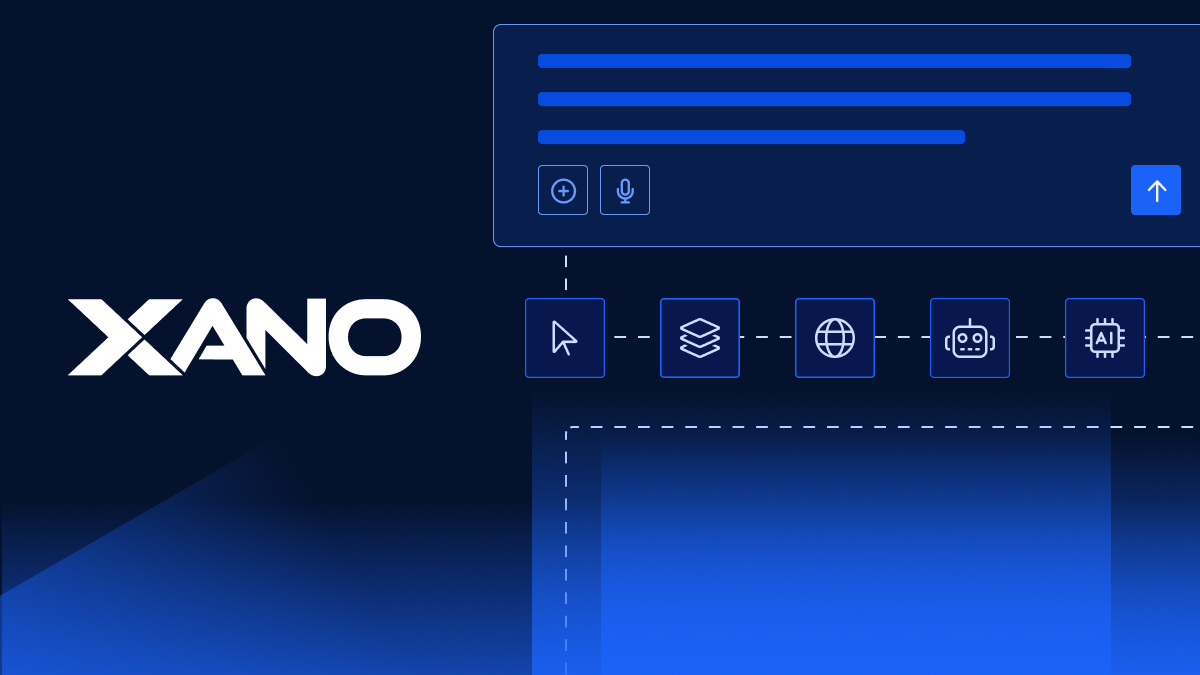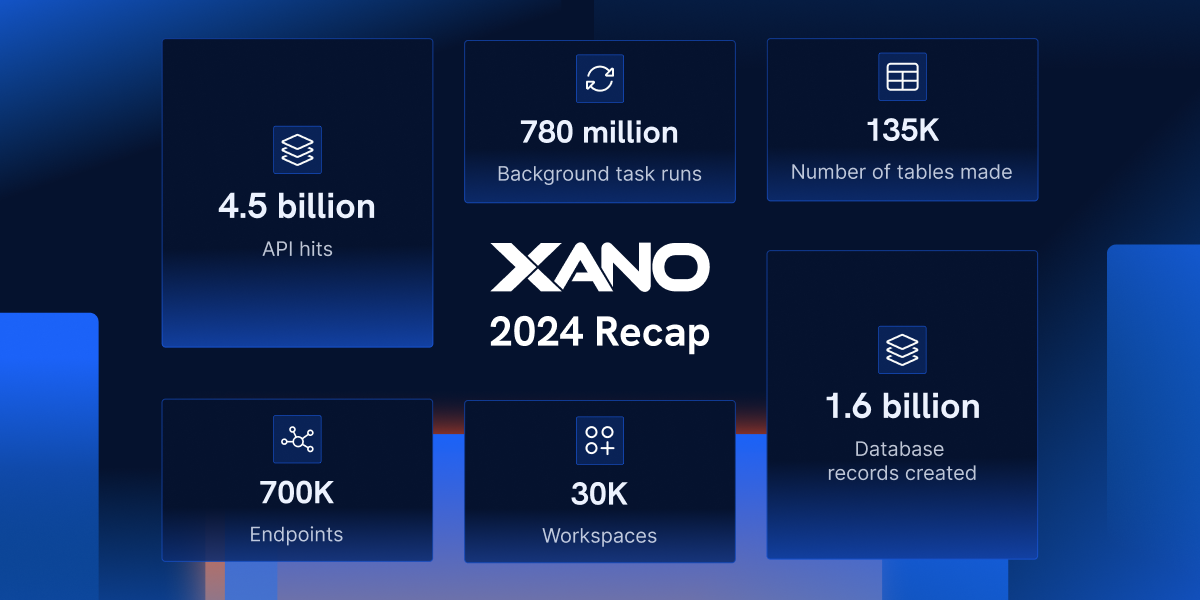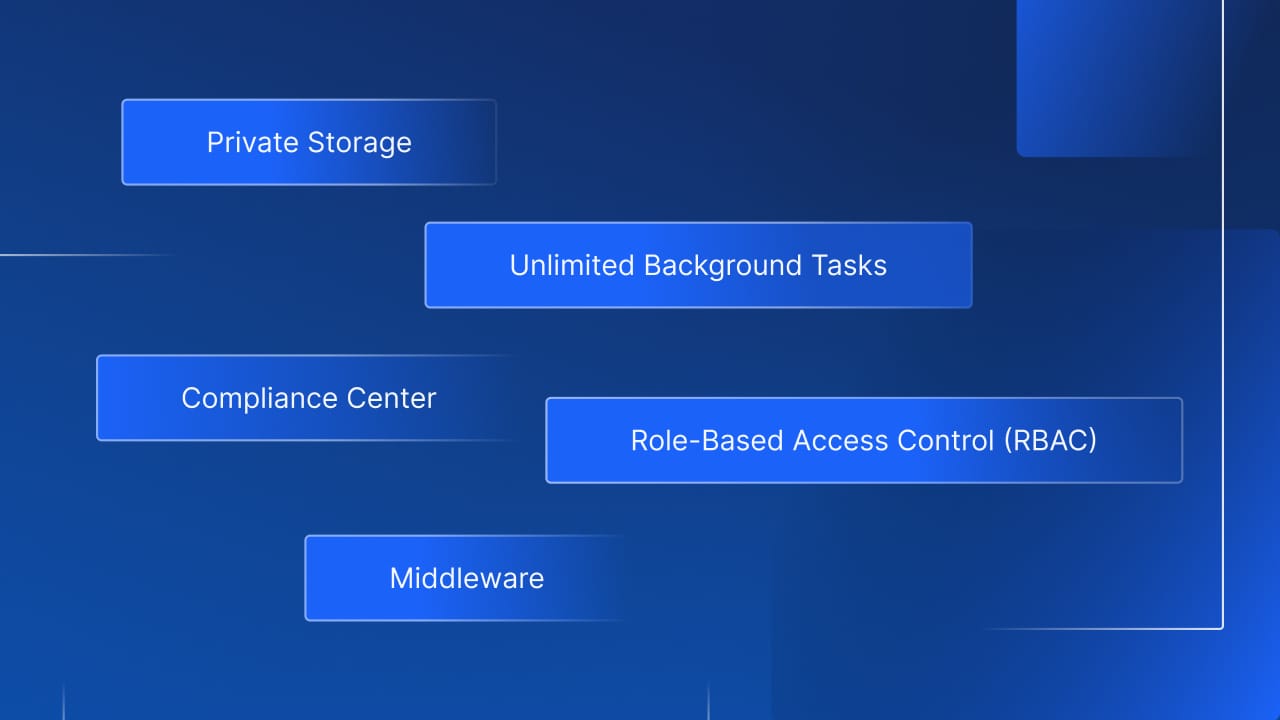5 Ways To Streamline Web App Development
By Xano | October 15, 2021

It is no secret that web app development is a long, often complex process and that meeting deadlines is not always easy – or even possible. Setbacks due to factors like unexpected bugs or changes in company structure can derail development in ways no one could have seen coming. The fact is, no matter how rigorous of a timeline you put in place, not every bottleneck can be accounted for.
The good news? Taking preemptive steps to streamline the app development process from the get-go can ensure – in the likely event you do encounter a sudden setback of some variety – that you'll have processes in place to keep things running smoothly overall. This can mitigate the impact of unforeseen circumstances and help you finish your project as fast as possible.
Below, we'll provide five easy ways to streamline web application development.
Streamlining Web App Development: Five Tips
1. Compile Frequently Used Codes Into A Library
Most developers repurpose the same code over and over again for common functions. There is no need to re-code an application from scratch every single time if you're using many similar features from a previous project. In fact, dedicating time to redundant code is an extraneous use of company resources.
Instead, keep a library of your most commonly used code to pull from as you're working on new projects. Not only can this save you hours and possibly days of work, it prevents burnout and boredom in your development team and will, in turn, ultimately lead to a better application. When developers focus on more challenging, engaging tasks, they look more at the bigger picture in terms of features and functionality. This leads to more engaged workers and a superior final product.
2. Automate Testing (And More)
Automation tools are your friend – especially during the testing phase. Investing in a variety of high-quality automation tools is what smart developers do to save time on a project and ensure their final product works correctly.
Many tools allow on-demand testing that help you to continually improve your product over time. More sophisticated tools even help with non-technical tasks like organizing your marketing campaigns and managing timelines.
Testing isn't the only place where automation can help. Tools like Docker and Kubernetes can help with scaling and deployment and can be especially useful for smaller teams with limited resources. A lot of modern automation tools work across multiple platforms and infrastructures, perfect if you're hoping to make your application widely available.
3. Use No Code Platforms for Web App Development
Another time-saving tool that can help a lot with app development, no code platforms provide a visual interface that allows you to build applications without the need for coding. No code tools once had a reputation for being clunky and something of a last resort in app development especially, but – as of around 2018 – they have become increasingly sophisticated and therefore increasingly popular. The right no code tool can significantly speed up web app development.
No code tools democratize software development by allowing even non-tech people to both weigh in and even make small changes. This eliminates a lot of back and forth between IT and the rest of the company. As much of the coding is already done, you can make small changes – ones that would normally take a full day of work – with just a few clicks.
However, not every project is suited for no code development (which we've discussed previously). More complex applications that require integration with other systems and databases may be better suited for low code platforms, which reduce up to 90% of coding but allow for more flexibility.
4. Create Protocol For Debugging
Bugs are unavoidable. Even the most sophisticated developers will occasionally run into them, but you cannot take steps to lessen their impact. Debugging can be tedious and slow-paced, but having a step-by-step process in place can help make it a little bit easier on your team.
Before you even begin development, set up a company-wide protocol for debugging. An assembly line process – in which each developer is allocated a single, small task – can help effectively identify and subsequently correct bugs.
On the topic of debugging, some of the above tips – such as using automation tools and no-code platforms – can also help prevent bugs. When certain processes are handled by a third party, it eliminates the possibility of human error, leading to less bugs overall and a much smoother development process.
5. Be Strategic About Your Web App Development Platforms
Sometimes, less is more when it comes to development. Do you really need an application to be available on everything from Android to Apple to BlackBerry? Probably not. To save time and resources, take a close look at who's really using your application.
If the majority of your likely users have iPhones, you may not need to roll out an Android version right away, and vice versa. Eliminating the need to develop for an entire platform means far less work for your team overall.
You can always expand later on as your app gets more users. If you're under a time crunch, being initially strategic about platform development can help you get to market faster.
Streamlining Web App Development: The Bottom Line
Web app development is a complicated and at times frustrating process and setbacks are inevitable. By being proactive and taking steps to keep the process as efficient as possible, you can reduce the impact unforeseen complications have on your timeline.
Looking for solutions for your company? Xano is the fastest No Code Backend development platform on the market. We give you a scalable server, a flexible database, and a No Code API builder that can transform, filter, and integrate with data from anywhere. Sign up here to get started.
The post 5 Ways To Streamline Web App Development appeared first on Xano.

















